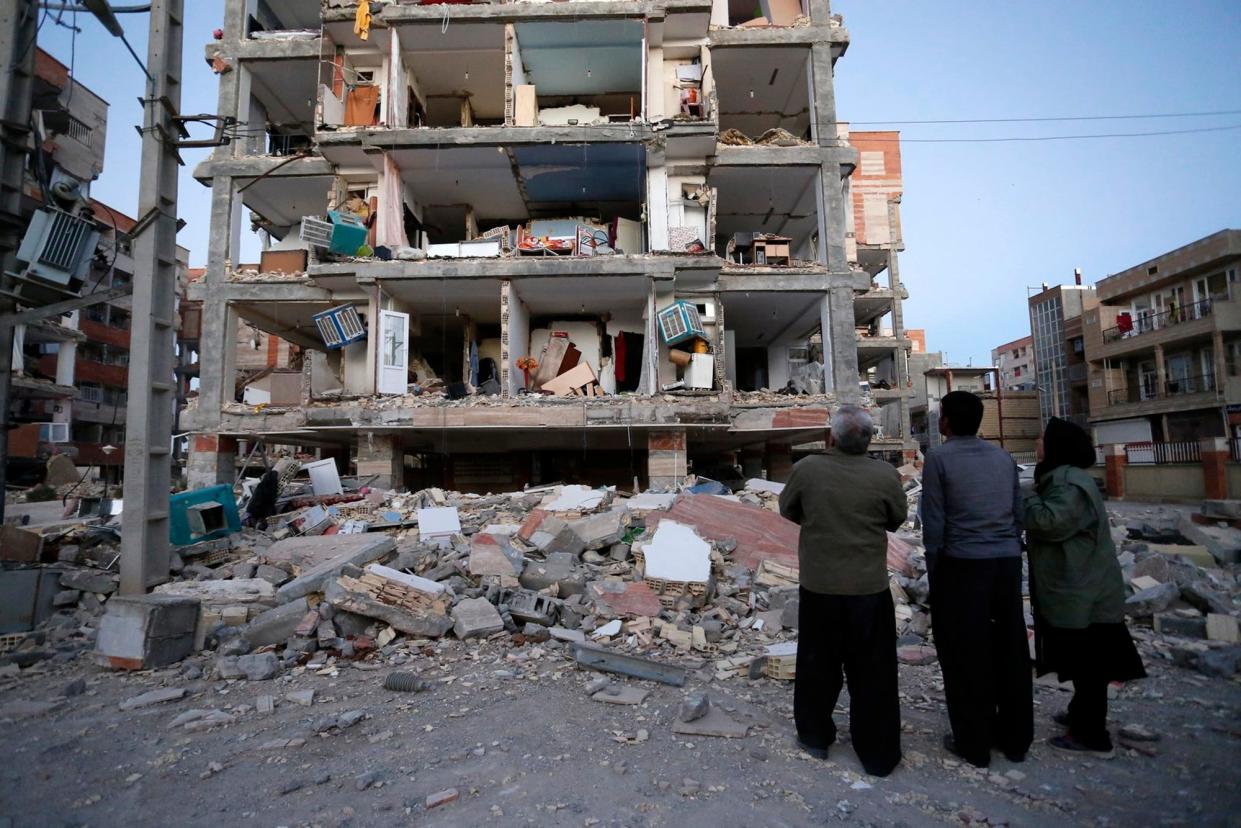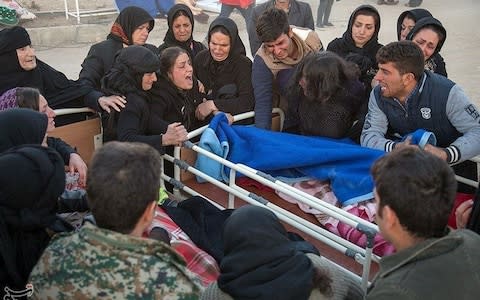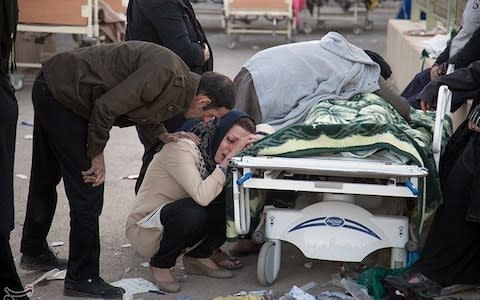Iran-Iraq earthquake: More than 400 dead as 7.3 magnitude earthquake strikes near border

Iranian rescue teams were struggling Monday to reach isolated villages cut off by landslides after a 7.3 magnitude earthquake which killed more than 400 people and injured almost 7,000.
The powerful earthquake struck the Iran-Iraq border region on Sunday night, shaking the Middle East as far as Israel and Turkey, but the worst of the devastation was borne in western Iran.
Iran said at least 407 people had been killed but the death toll was expected to rise as rescuers reached more remote parts of the mountainous Kermanshah province. Another 6,700 people were injured.
At least seven people were killed in Iraq’s Kurdish region and more than 300 were reportedly taken to hospital with injuries.
The earthquake was the worst in Iran since 2005, when 612 people were killed in the country’s southeast. It was also the deadliest earthquake of 2017, overtaking the 369 people killed in Mexico City in September.

Iran’s government said it was mobilising the army, militia forces, and the elite Revolutionary Guard Corps to help with relief efforts but as the sun set on Monday rescuers were still struggling to reach parts of the disaster zone.
Iran’s supreme leader, Ayatollah Ali Khameini, exhorted rescue teams to move as quickly as possible while there was still a chance to save people buried by the quake.
“It is the duty of the authorities in these first hours with all their determination and ability to help the injured, especially those trapped under the rubble,” he said.
Graphic: Iraq earthquake
Aid workers used rescue dogs and heat sensors to try to find those trapped inside collapsed buildings while helicopters and heavy construction equipment were brought in to support the search.
More than 200 people were reportedly killed in Sarpol-e Zahab, a city of around 34,000 people which sits a few miles from the Iraqi border.
Photographs from the scene showed buildings that had completely collapsed and a mother weeping in the street as she held the body of her young daughter. Another woman and her baby were pulled from rubble, according to local media.
In one video posted online on Monday morning, a resident said soldiers were working to help people without gloves or any special equipment and there was no sign of rescue teams.
Narrator: 100s of soldiers with no masks/gloves/equipment; theft is rampant and stopped by locals; and no officials present since the quake #Kermanshah#Iranpic.twitter.com/ugujpV8dMu
— Holly Dagres (@hdagres) November 13, 2017
“There has been no help yet, neither food nor water, no clothing, no tents, there is nothing,” said another man. “Our electricity, water, gas, phone lines are out, everything is completely out, the whole city has been destroyed, it is wrecked.”
Eshaq Jahangiri, one of Iran’s vice presidents, said many of the buildings which had collapsed had been built under the Mehr Housing Project, a government building programme championed by former president Mahmoud Ahmadinejad.
Mr Jahangiri said there would be an investigation into the structures, which were build for poor Iranians as a part of Mr Ahmadinejad’s populist domestic policies.

Thousands of people in Tehran and other cities waited in long lines to donate blood after the earthquake.
Boris Johnson, the foreign secretary, offered “deepest condolences” to both Iran and Iraq. “The UK stands ready to help the victims and the recovery effort,” said Mr Johnson, who is expected to visit Iran in the coming weeks.
The Pope and other world leaders also sent their sympathies. "Upon the injured and the emergency and civil authorities engaged in rescue and recovery efforts, His Holiness invokes the divine blessings of consolation and strength,” a Vatican spokesman said.

The Turkish Red Crescent dispatched 33 aid trucks to the Iraqi city of Sulaimaniyah while Turkey’s military flew a cargo plane with aid and rescue workers into Iraq. Turkey said it was prepared to help Iran also if aid was requested.
The earthquake struck Iraq’s Kurdish region just weeks after fighting between Iraqi government forces and Kurdish troops after a disputed independence referendum. Baghdad said it would help all Iraqis, regardless of the recent tensions in the area.
Sherwana Castle, an historic 18th century fortress built by a Kurdish king, appeared to have been badly damaged by the quake.

